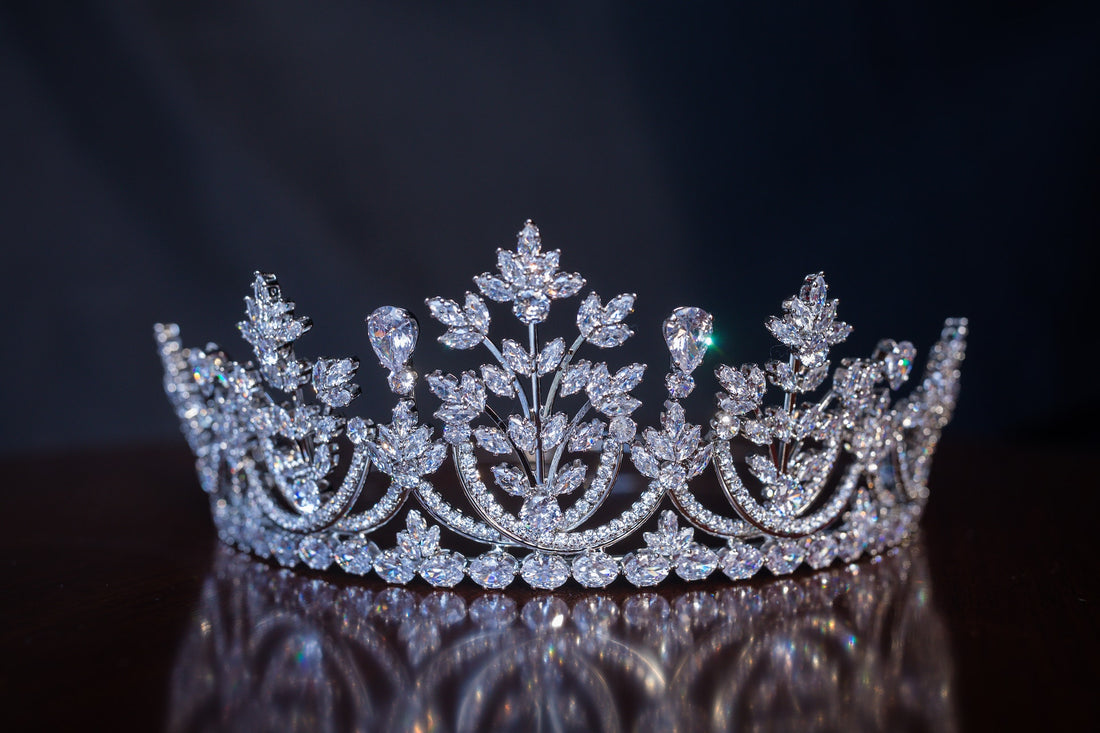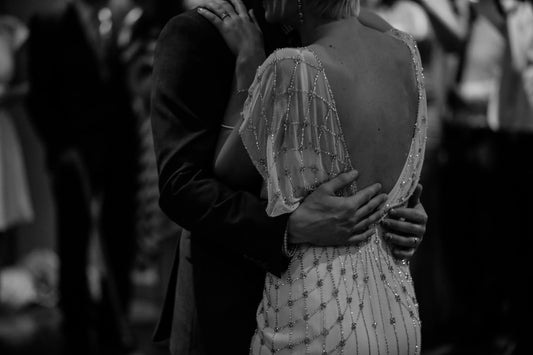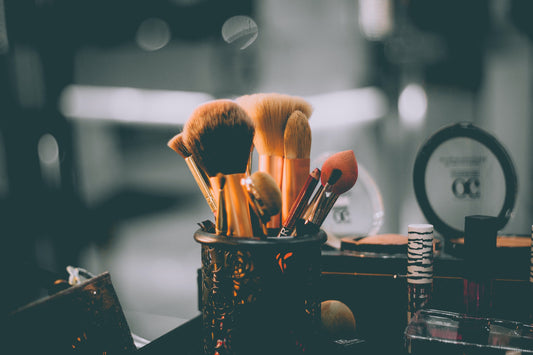Introduction
Throughout history, tiaras have adorned the heads of queens, princesses, and noblewomen, symbolizing regal elegance and sophistication. These majestic headpieces have captivated our imagination with their dazzling allure. Join us on a journey as we explore the fascinating history and origins of tiaras, tracing their origins from ancient civilizations to the present day.

1. Ancient Beginnings
Tiaras find their roots in the ancient world, where they were worn by both men and women as symbols of power, status, and divinity. In ancient Egypt, pharaohs donned diadem-like headdresses, adorned with precious gems, to signify their authority and connection with the gods. In Mesopotamia, tiara-like crowns embellished with gold, silver, and gemstones were worn by rulers and high-ranking officials.

Photo By Color Crescent (@colorcrescent)
2. Greek and Roman Influence
The ancient Greeks and Romans introduced the concept of tiaras as ceremonial headpieces. Greek goddesses, such as Athena and Hera, were often depicted wearing diadems, enhancing their divine appearance. Tiaras made of laurel wreaths were also bestowed upon victors in athletic competitions, signifying their glory and achievement. In Roman culture, tiaras became more ornate and elaborate, featuring intricate designs and gemstones.

Photo By Alexey Komissarov - Photography
3. Medieval Splendor
During the Middle Ages, tiaras evolved into more intricate and stylized forms. Noblewomen and queens adorned their heads with diadems, often adorned with pearls, gemstones, and elaborate filigree work. These tiaras were associated with nobility, grace, and royalty, serving as symbols of wealth and social standing.

Photo By MatthiasKabel is licensed under CC BY-SA 3.0

Photo By CSvBibra licensed under CC BY-SA 4.0
4. Renaissance Opulence
The Renaissance period witnessed a resurgence of interest in classical art and culture, inspiring the design of tiaras. Prominent among these were the floral wreath tiaras, reflecting the era's fascination with nature. Pearls, emeralds, rubies, and diamonds were incorporated into these headpieces, adding a touch of extravagance.

Photo By Beesnest McClain | Flickr
5. 18th and 19th Centuries
The 18th and 19th centuries marked the pinnacle of tiara fashion. With the rise of European monarchies, tiaras became synonymous with royalty and were frequently worn by queens and princesses. The neoclassical style influenced the design of tiaras during this period, characterized by delicate motifs, openwork designs, and the extensive use of diamonds.

Photo By CSvBibra Licensed under CC BY-SA 4.0

Photo By Markus Spiske (@markusspiske)
6. Art Nouveau and Art Deco Eras
The turn of the 20th century saw a shift in tiara design. The Art Nouveau movement introduced organic and flowing forms, with tiaras featuring natural motifs such as flowers, leaves, and butterflies. As the Art Deco era emerged, geometric shapes, bold lines, and vibrant colors took center stage, influencing the design of tiaras with a modern and sleek aesthetic.

Photo By Leeloo Thefirst - Photography
7. Contemporary Tiaras
In the modern era, tiaras continue to be worn during significant royal events, weddings, and formal occasions. The British royal family possesses a vast collection of tiaras, some with historical significance, passed down through generations. Additionally, renowned jewelry houses and designers create exquisite tiaras, combining traditional craftsmanship with contemporary flair.

Queen Mary By Home | Wellcome

Queen Elizabeth II By Julian Calder for Governor-General of New Zealand
Conclusion
From ancient civilizations to modern-day glamour, tiaras have maintained their allure and mystique. These majestic headpieces have evolved throughout history, reflecting the artistic and cultural influences of each era. Today, tiaras remain as cherished symbols of elegance, sophistication, and royal heritage, adding a touch of enchantment to the world of fashion and beauty.
Lastly, if you're looking to add a touch of regal elegance to your collection or searching for the perfect accessory to make a statement, we invite you to explore our exquisite tiara collection. From delicate and dainty designs to bold and elaborate pieces, our tiaras are crafted with precision and adorned with sparkling diamonds that will make you feel like royalty.
Discover the enchanting beauty of our tiaras. Each piece has been carefully curated to offer you a selection that combines classic sophistication with modern flair. Whether it's for a wedding, special occasion, or simply to indulge your inner princess, our tiaras are sure to captivate your heart and leave you feeling truly extraordinary.
Shop now and embrace the elegance and grace that only a tiara can bring. Let our stunning creations be the crowning glory of your jewelry collection. It's time to sparkle and shine like never before!







